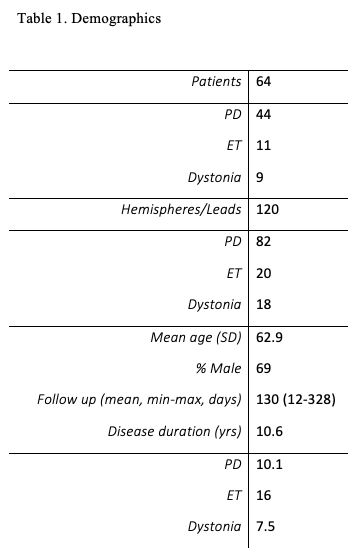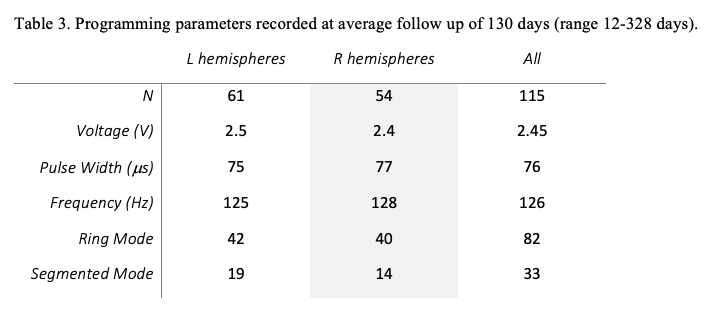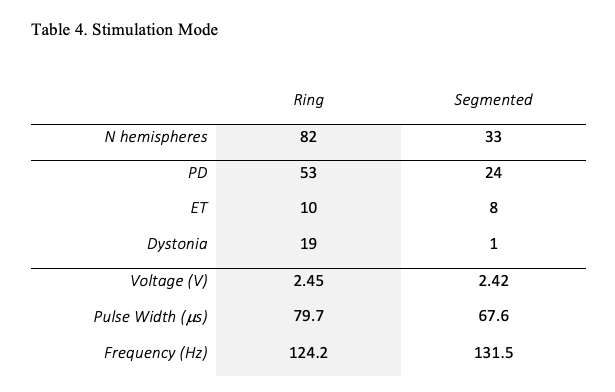Session Information
Date: Wednesday, September 25, 2019
Session Title: Surgical Therapy
Session Time: 1:15pm-2:45pm
Location: Les Muses Terrace, Level 3
Objective: The authors’ experience with implantation of the first 100 patients implanted with Abbott St. Jude Medical Infinity™ DBS lead system.
Background: The introduction of segmented leads for DBS surgery provides the theoretical advantages of steering current away from unintended structures, enhancing efficacy, and reducing the generator energy expenditure. The Abbott St. Jude Medical Infinity™ system has been commercially available for implantation in US and Europe. We report our center’s initial experience with implanting these leads in 100 patients with this system. Technical nuances and initial programming considerations will be discussed.
Method: All patients that underwent DBS implantation with the Infinity™DBS lead system over a 22-month[SBS1] period were analyzed. Demographic information and procedural data including operative time, lead placement radial error and complications were recorded. Programming settings including voltage, pulse width, frequency and ring vs. segmental modes at most recent follow up were also recorded.[SBS1]Use the follow up time for all 100+ patients. Although our data is limited now, we will present all 100 patients at the meeting.
Results: A total of 64 (note: data for all 100 patients will be available at the time of presentation) patients were implanted with the Infinity™ DBS lead system. Demographic information is shown in [table1]. The majority of patients (87.5%) underwent bilateral lead implantation. The most common pathology treated was Parkinson’s disease (69%). Procedural information is listed in [table2]. The average radial error to target was 1.06±0.11 mm. There was one major complication (venous air embolism). Average follow up time for assessment of programming parameters was 130 days. Ring mode was utilized in 71% of hemispheres at most recent follow up with only 29% of hemispheres utilizing segmented current steering. Programming parameters are shown in [table3] and [table4].
Conclusion: The Abbott St. Jude Medical Infinity™ DBS lead insertion necessitates particular attention to placement of segmented contacts at optimal depth. Lead orientation at time of surgery is difficult. Although the majority of leads at follow up were still utilizing ring mode, long term clinical outcome data is necessary to assess the touted benefit of segmental stimulation on therapeutic efficacy.
To cite this abstract in AMA style:
R. Kochanski, A. Borghei, G. Pal, L. Verhagen Metman, F. Lynn, J. Karl, S. Sani. Directional Deep Brain Stimulation Lead Implantation: A Single Center Experience [abstract]. Mov Disord. 2019; 34 (suppl 2). https://www.mdsabstracts.org/abstract/directional-deep-brain-stimulation-lead-implantation-a-single-center-experience/. Accessed December 16, 2025.« Back to 2019 International Congress
MDS Abstracts - https://www.mdsabstracts.org/abstract/directional-deep-brain-stimulation-lead-implantation-a-single-center-experience/




